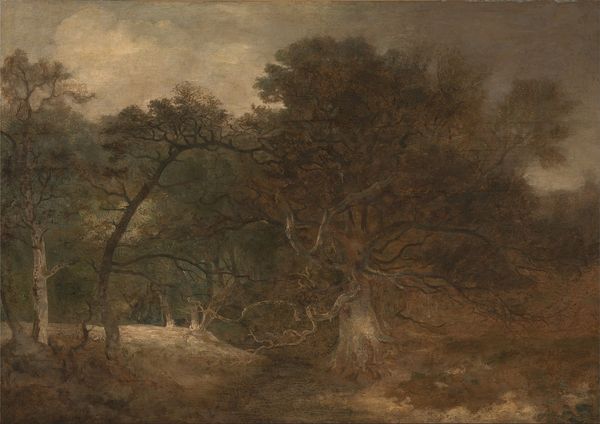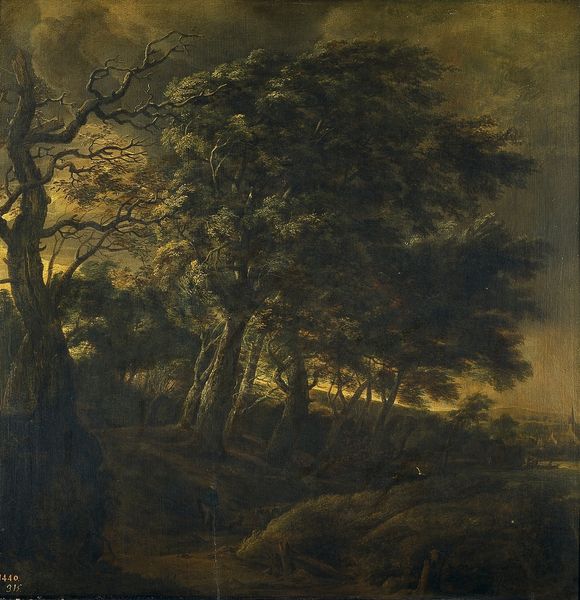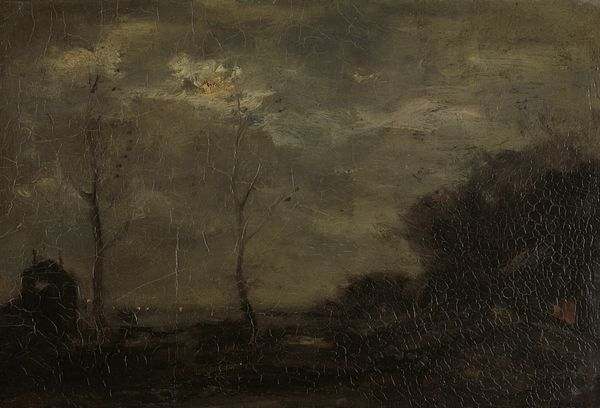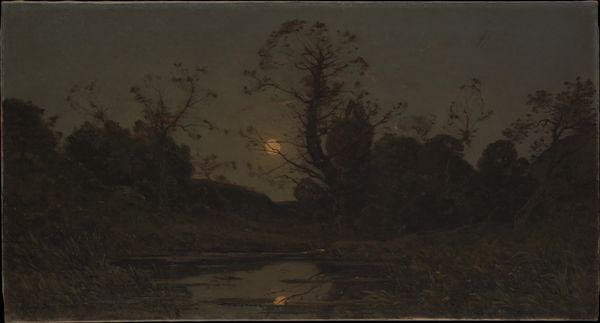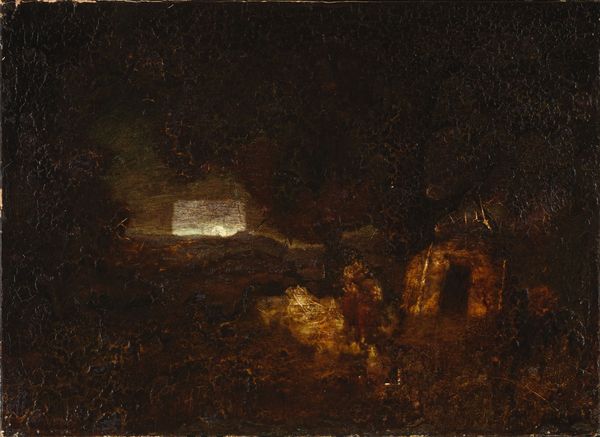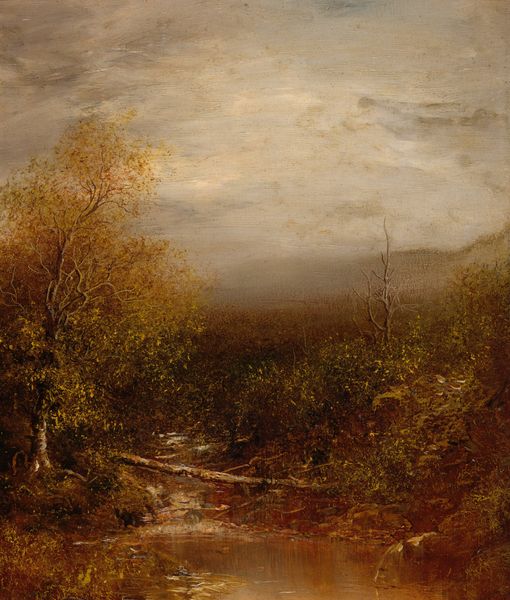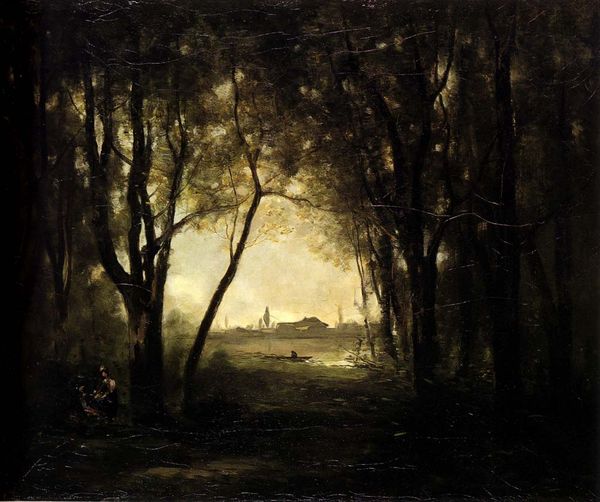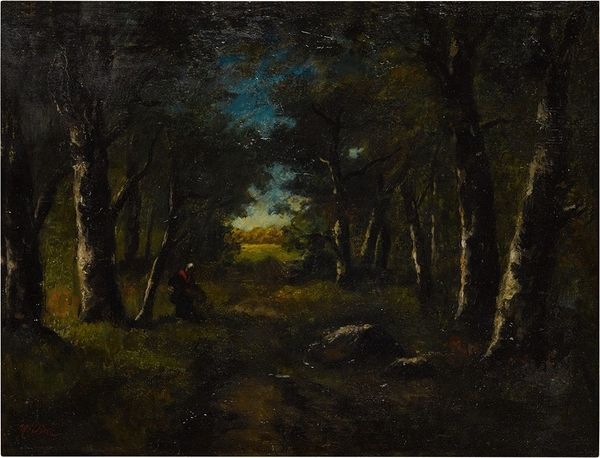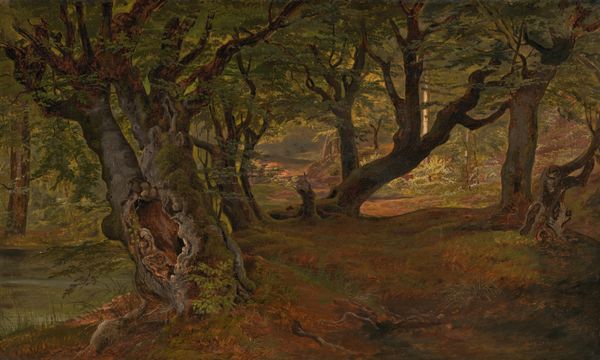
Dimensions: 64 x 102 3/8 in. (162.6 x 260 cm)
Copyright: Public Domain
Curator: Here we have Theodore Rousseau's "The Forest in Winter at Sunset," a landscape executed in oil paint, likely sometime between 1846 and 1867. What does it conjure for you? Editor: My gut reaction is... intense quiet. That kind of profound silence you only find in a deeply wooded area right as dusk settles. There’s a real weightiness to it. Almost oppressive, but beautiful. Curator: Indeed. Rousseau, though associated with the Barbizon School and its turn toward realism, carries a heavy streak of Romanticism in his landscapes, a reverence for nature tinged with an awareness of its indifferent power. He challenges simplistic views of nature, pushing beyond mere aesthetic appreciation. What sociopolitical contexts might influence this approach to the natural world? Editor: I get that, completely. You know, looking at the density, the sheer darkness… it almost feels like a visual representation of societal anxieties, the unknown lurking just beyond the edges of what we can see, pressing in on us. Did he deliberately desaturate the palette to evoke such a dismal outlook? It’s pretty evocative. Curator: Well, Rousseau’s focus on light and atmosphere sought to capture ephemeral moments. Some scholars propose his darkening palette later in his career mirrored a growing unease regarding the encroachment of industrialization upon the French countryside. A direct socio-political critique delivered via nature, if you will. Editor: I see that anxiety in the branches, the way they claw at the sky! There's very little relief in that landscape. No sense of warmth or hope – more like an acceptance of inevitable decay. And yet, there is some melancholic splendor there as well... The setting sun casting its hues adds an eerie, sublime tone. Curator: The use of color, though muted, remains masterful, subtly drawing the eye through the depth of the forest. It speaks volumes about Rousseau’s deep, perhaps conflicted, engagement with his environment. What, for you, remains the painting’s most powerful quality? Editor: I think it’s that ability to capture a specific feeling, a very particular mood of almost palpable dread and quiet awe that hangs in the air before a big change, the kind you feel at sunset or before a snowstorm... I leave this piece thinking, wow, I didn't just *see* a forest. I *felt* it. Curator: An excellent summation. It challenges the observer to reconsider idealized, bucolic portrayals of nature in favor of an image brimming with historical and emotional complexity.
Comments
No comments
Be the first to comment and join the conversation on the ultimate creative platform.
